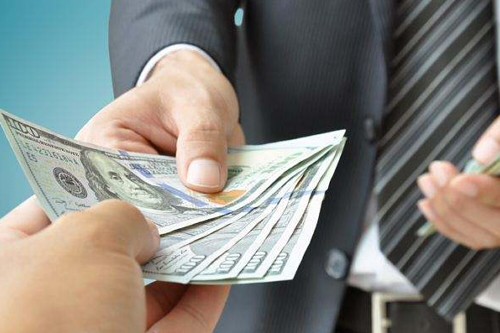Make the Most of Every Paycheck
Paul Sisolak
It’s payday, and you’re feeling flush. So, you pay the rent or mortgage, cover some bills, and maybe hit up a happy hour with friends – then poof! Most of your money’s gone, and you’re counting down till payday again.
Sound familiar?
If so, you’ve got lots of company. New data released in August by the Bureau of Labor Statistics show the average US household brings home an annual after-tax income of $64,175 – and spends $57,311 (or 89%) of it.
Which expenses are eating up the biggest portion of our paychecks? Here are a few top offenders, plus advice on how to cut those back, so you can direct more money toward savings, paying down debt, and other goals.
Housing
Last year, we coughed up an average of $18,886, or almost 33% of total spending, on everything from rent and mortgage payments to maintenance and insurance. That’s not far off the general guideline to dedicate a max of 30% to housing, but there’s always room for improvement.
If drastic measures like downsizing to a cheaper place aren’t possible, consider other housing hacks, like renting out your space, getting a roommate, or even house-sitting. Slashing costs by even 10% can equal enormous savings, says Certified Financial Planner Robert Finley.
Utilities
We also spent another $3,884 on utilities and phone bills.
Fortunately, small efforts really pay off here: Turning off the tap while brushing your teeth and adjusting the thermostat can dramatically reduce your utility bill. And downgrading your data package and asking your provider about specials can trim your phone bill.
Transportation
At $9,049, transportation accounted for an average 16% of total spending. That includes vehicle purchases, gas, insurance, maintenance, and public transportation.
Carpooling, biking, using public transportation instead of driving, scouting cheaper gas prices, and researching cheaper auto insurance rates are high-impact ways to save. You can also rent your car out when you’re not using it through car-sharing services like TravelCar (only in LA now), Getaround, or Turo to offset costs.

Food
Americans shelled out an average $7,203 on groceries ($4,049) and dining out ($3,154) – or about 12.5% of total annual spending.
Of course, cooking at home, eating leftovers, and brown-bagging can help you save, but you don’t need to go cold turkey on dining out. Eating at the bar, sticking to the lunch or happy hour menu, and researching deals on sites like RetailMeNot and Groupon can cut your bill without cutting into your fun.
For groceries, shop at warehouse clubs where you can buy in bulk, or at discount stores like Aldi, suggests Alexis Hongamen, a Chartered Retirement Planning Counselor in Orlando, FL. Opting for generic or store-brand products, buying budget-friendly foods with a long shelf life, and shopping with a list can also keep your grocery bill in check.
Health Care
We spent another $4,612 last year – or 8% – on medical costs, including insurance premiums and prescriptions.
Determining how much you should be spending on health care all depends on your needs, and ultimately, the size of your paycheck. But if your costs fluctuate, Hongamen suggests opening a Flexible Spending Account, or FSA, which allows you to set aside a portion of your pre-tax income to pay for certain qualifying medical expenses – from medication to braces and contact lenses.
Entertainment
Finally, we spent $2,913, or about 5% of income, on entertainment, which includes fees and admissions, hobbies, and pets.
There’s no reason to stop spending here, but there are often cheaper ways to have fun – from hosting game nights with friends and exploring local parks and trails to checking out free concerts and other events.
“We specifically look for restaurants where kids eat free on certain days, and we only go there on those days,” says blogger Jeff Campbell of MiddleClassDad.com.
Annual passes to museums and amusement parks can also pay for themselves within a few visits. “Then you can go throughout the year anytime, even if you’re broke,” saysCampbell. Most museums also have one day a month when they’re open to the public for free.








